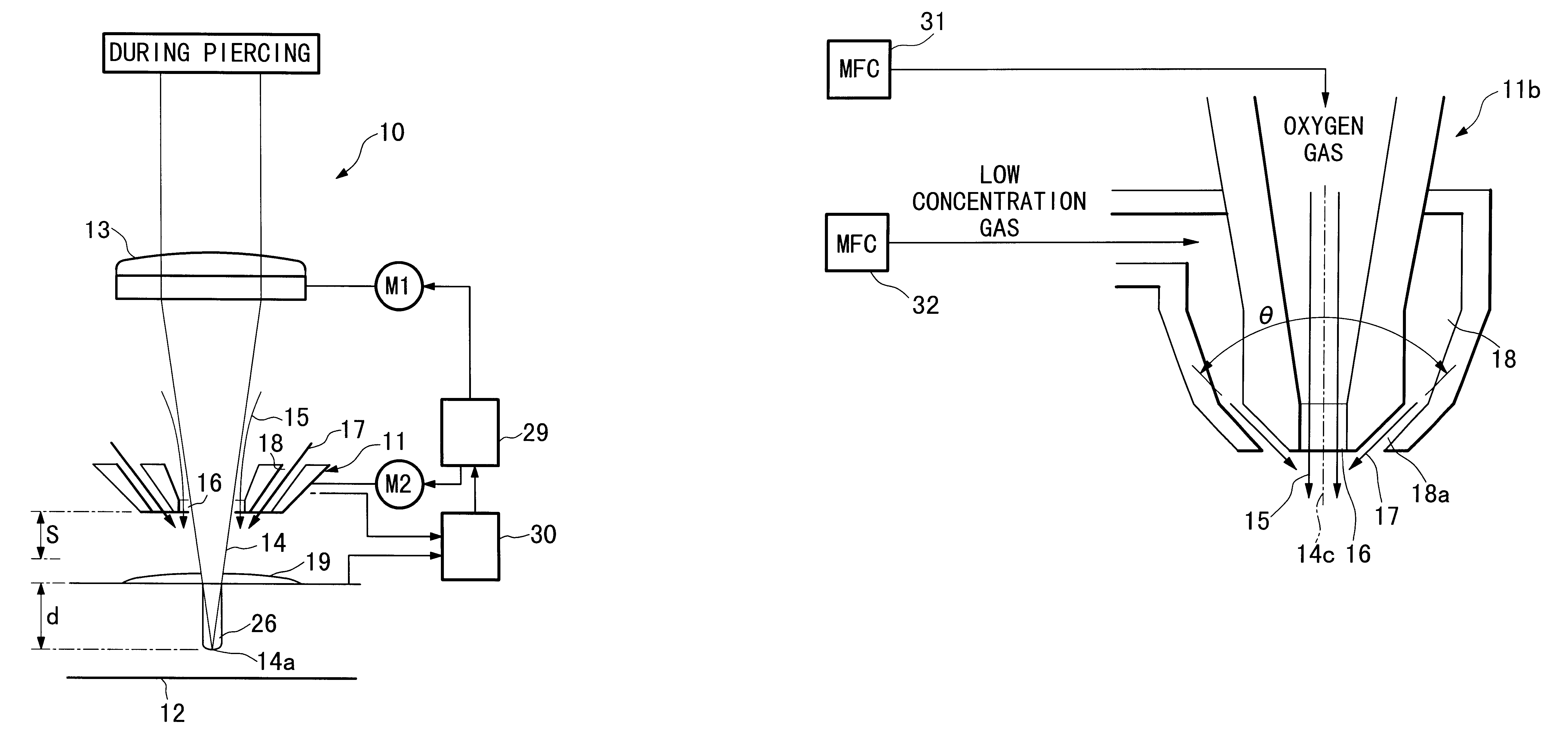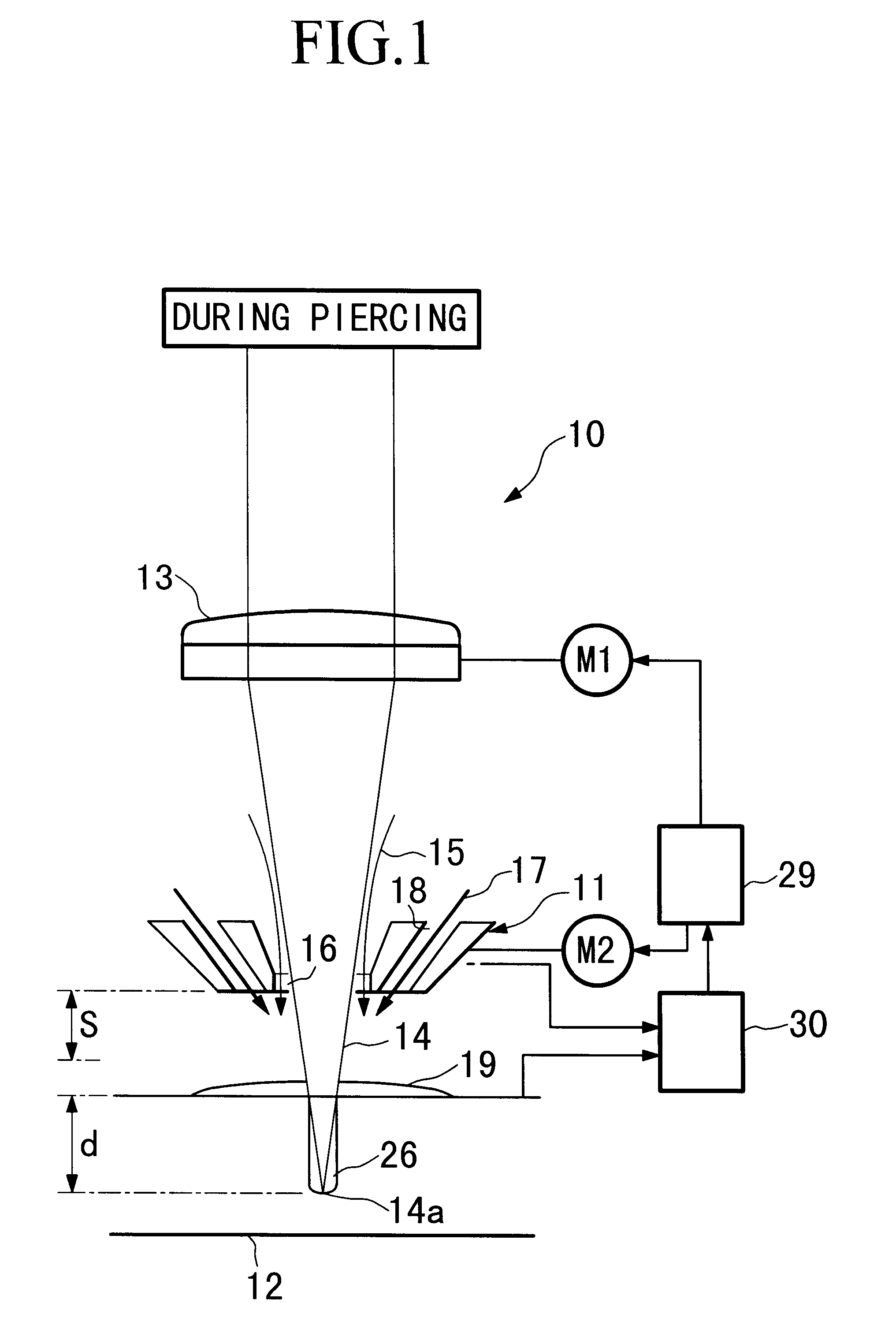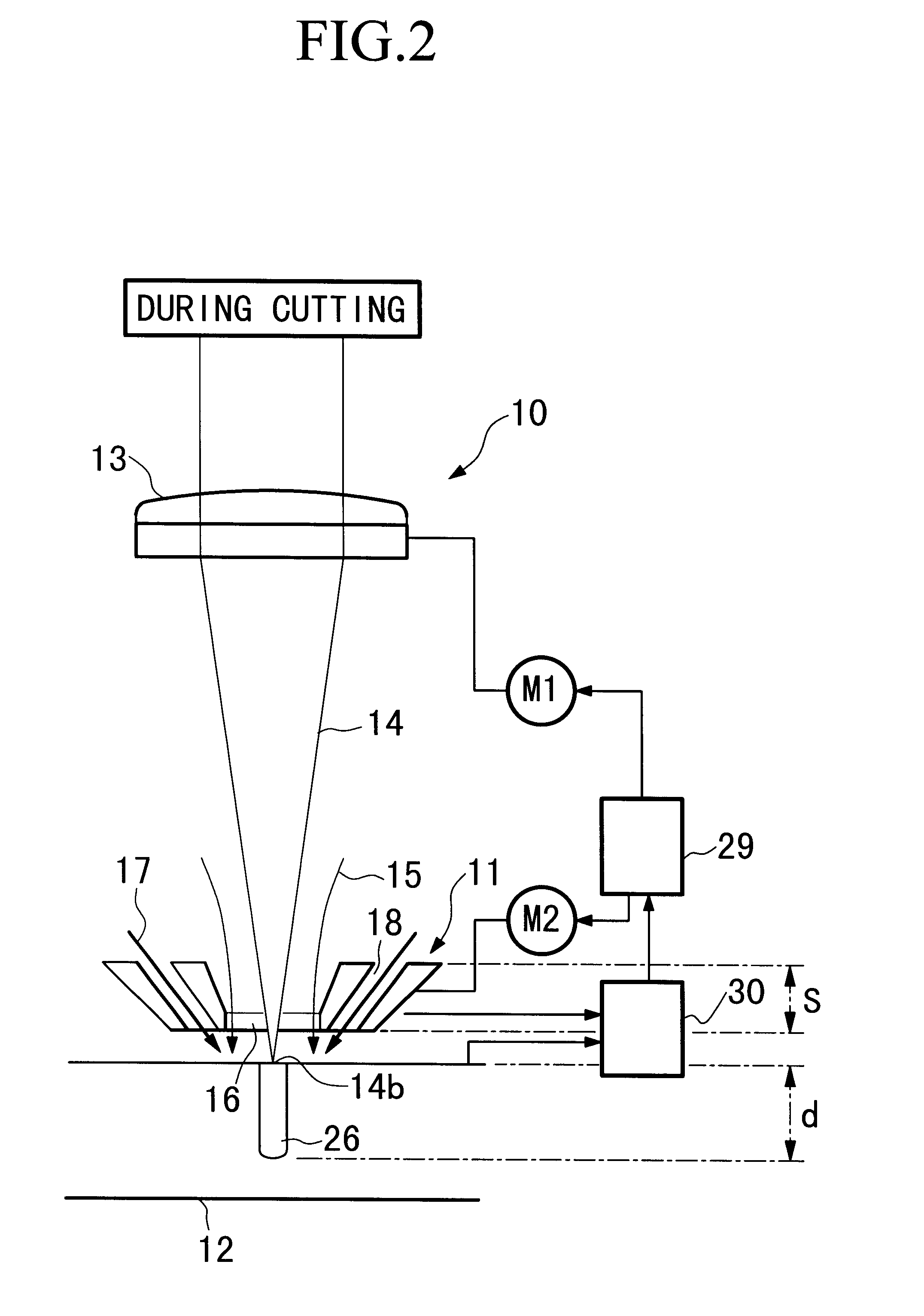Laser piercing method, laser processing nozzle, and laser cutting apparatus
a laser cutting and laser processing technology, applied in laser beam welding apparatus, manufacturing tools, welding/soldering/cutting articles, etc., can solve the problems of incomplete cutting, large increase in blowing away molten metal, and damage to the cutting nozzle 1 and the focusing lens,
- Summary
- Abstract
- Description
- Claims
- Application Information
AI Technical Summary
Problems solved by technology
Method used
Image
Examples
Embodiment Construction
Below, an embodiment of the present invention referring to the drawings.
FIG. 1 and FIG. 2 are frontal views showing the vicinity of the processing head 10 of the laser cutting apparatus; FIG. 1 is during piercing, and FIG. 2 is during cutting.
In FIG. 1, in the laser piercing operation using this laser cutting apparatus is carried out by raising and lowering the laser processing nozzle 11 (hereinafter, abbreviated as "nozzle") by activating the nozzle activation mechanism M2, and positioning it at an appropriate position approaching the cut work 12 horizontally positioned below, and at the same time, by raining and lowering the lens 13 by activating the lens activation mechanism M1, positioning it where the laser beam applied to this cut work converges sop as to join the focal point of the cut work 12.
FIG. 3 is a cross-section showing a nozzle 11a which is an example of the nozzle 11.
In FIG. 3, the nozzle 11a provides an inner gas nozzle 16 through which the laser beam 14 (not shown ...
PUM
| Property | Measurement | Unit |
|---|---|---|
| thickness | aaaaa | aaaaa |
| thickness | aaaaa | aaaaa |
| thickness | aaaaa | aaaaa |
Abstract
Description
Claims
Application Information
 Login to View More
Login to View More - Generate Ideas
- Intellectual Property
- Life Sciences
- Materials
- Tech Scout
- Unparalleled Data Quality
- Higher Quality Content
- 60% Fewer Hallucinations
Browse by: Latest US Patents, China's latest patents, Technical Efficacy Thesaurus, Application Domain, Technology Topic, Popular Technical Reports.
© 2025 PatSnap. All rights reserved.Legal|Privacy policy|Modern Slavery Act Transparency Statement|Sitemap|About US| Contact US: help@patsnap.com



